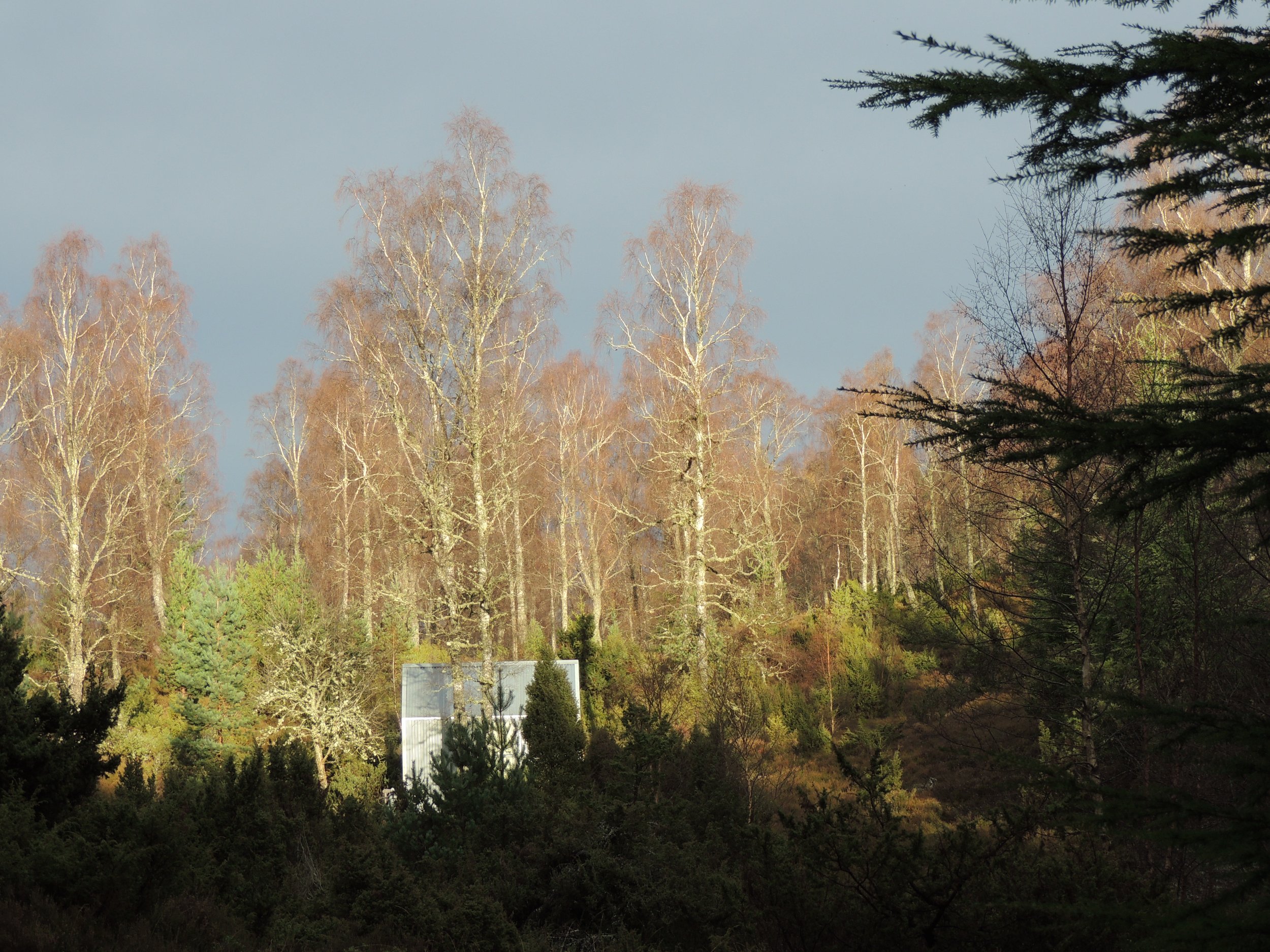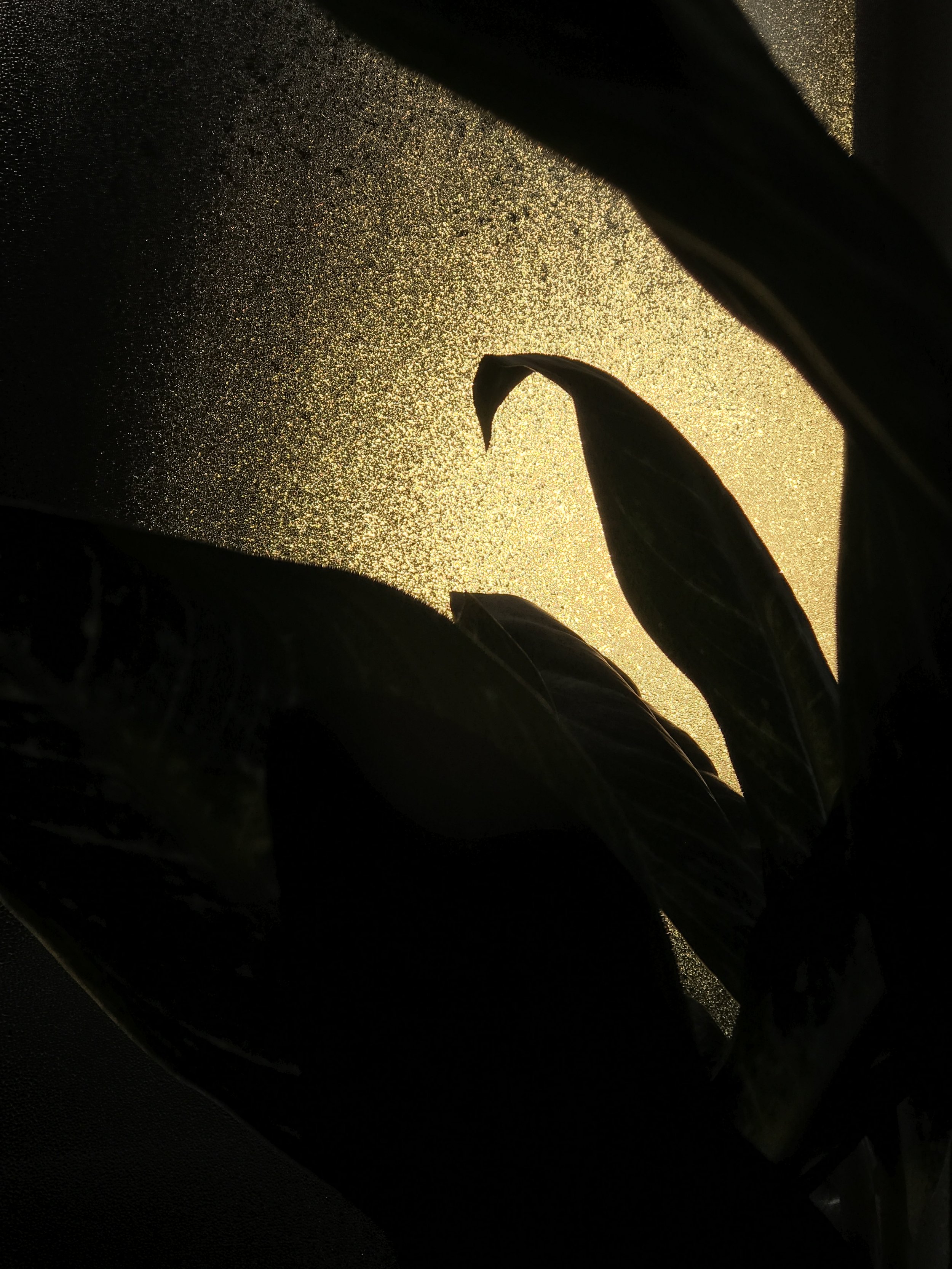Thinking through words and sounds: the phenomenology of sound and listening.
Listening as readiness. Listening as a way of seeing.
Stillness as silence. Silence as invisibility.
The fear of being lost. The fear of being found.
[...]
The work and rhythm of daily life. The charged values of light, heat and water.
Knowing through inhabiting.
Waldeinsamkeit, Inshriach Bothy Artist’s Residency, Aviemore, 2014
A Tascam DR-40 portable digital device and I record sound in off-grid time. I operate the listening apparatus and it operates me, producing quietness, slowness, and a paradoxical alertness. The imbrication of woman/listening/machine allows for openings; fissures in ordinary time. A slowing of vital signs. Pleasure. Readiness.
Machine-me plays in dark and daylight, outside, inside and between. The sonic signatures of trees, heather, rain, reveal themselves behind the apparatus’ plastic casing. Neuronal pathways inscribe a version behind bone.
Body crouched on low stool, warmth at back, cold at front, dry under rain. A singular sound in mind's ear. The phantom 'sssss' of electronic waiting: a psithurism before the fact, always already a non-silence. My minds registration of the non-sound signals to the machine that we will begin.
Recalling Inshriach Bothy, Glasgow, 2020
Sonic Superposition or Tempus Fugit
(To be read silently as though aloud)
Three overlapping vibrations. Heard concurrently.
In soft bursts. Psst. Past.
Hee-whoo-who-who-whoooo (In the vein of owl-calls made with veined hands)
Cho-choh-cho-cho-chohhh (With soft pallette hard, heard in Scots and German)
Rrrr-rrrr-rr-rr-rrrrrr (With ringing rolling easy off of French tongues)
Some muffled rackets intermittent too (In the class of fluttering and scratching?)
Not belonging to any language we’ve heard
Complicated by a hollow space
Behind the hardboard of the blocked-in hearth
Maybe in the alleyway beside the house?
On roof tiles laughing down your chimney?
Sounding only in the mind’s ear
Your own sounds as well
(Though silent here)
I know they are wood pigeons.
I know they live in Glasgow just as London gardens.
And I know they are twelve generations dead.
Future me comes crashing to your sonic present(s/ce). Feathers all awry
And I was already there
Our world is saturated by images, but much less attention is paid to sound, laments poet Tom Paulin in his article The Despotism of the Eye. This is despite the fact that, according to him, our imaginations depend so crucially on sound for their sense of dwelling, or “being at home in the world.” (Paulin, 2003. p36). Paulin conjures an example of how sound, even when its cause is ambiguous, can bestow a sense of home. He describes a mysterious howling sound he was used to hearing in childhood. He knew that it came from the nearby Belfast docks but only much later found out that it was caused by the wind of the Lough ululating through long rows of corporation railings. As an adult, the sound has remained an important sensory anchor, for him, to the feeling of “amor loci”, or love of place, he has for his home town. In ‘Sonic Superposition or tempus fugit’ (above), I make use of the kind of sonic evocation of place-memory that Paulin describes, to imagine two versions of my mind-body, across fifty-years of space-time, connected via the calls of wood pigeons.
We should perhaps regret society’s lack of focus on sound, as Paulin does, for many reasons––not least because of the obvious social and relationship benefits of developing our listening skills. It is doubtful that we could ever, or should want to, seek to replace the primacy of vision with an alternative––sonic––paradigm, but, in the interests of plurality, isn’t it worth asking whether contemporary culture might benefit from closer attuning to the auditory realm. As Salomé Voegelin explains in Listening to Noise and Silence, her wonderful book on sound art, developing a “sonic sensibility” could give us, not only a richer appreciation of sound, but access to “the unseen aspects of visuality, augmenting rather than opposing a visual philosophy.” (Voegelin, 2010). There is no need to do away with the importance of vision, but what are we blinded to when we underestimate the power of sound?
Paulin’s essay also laments the lack of attention paid to sound in film (Paulin, 2003). Sound is more often than not given a supporting role and seen as a supplement to the image (Chion, 2015). In my audio visual work I am interested in sound’s capacity to speak of other worlds outside the frame of the image, perhaps making perceptible the “unseen aspects of visuality” that Voegelin alludes to (Voegelin, 2010). It may be, that by taking sound in film as seriously as the image, it is possible to bring sound and image closer to the status of equal partners and gain access to a deeper range of sensory experience when we explore the entanglement of moving image and sound more explicitly.
Paulin, Tom. "The Despotism of the Eye." Chap. 4 In Title:Soundscape : The School of Sound Lectures, 1998-2001 /, edited by Larry Sider, 35-49. London, New York: Wallflower Press, 2003.
Voegelin, Salomé. Listening to Noise and Silence: Towards a Philosophy of Sound Art. New York, London: Continuum, 2010.
Sonic Sense Meditation (after Pauline Oliveros)
Try to pin down a sound. Fix it.
See it move through air. See it move air.
Try to catch a fever or a feather.
Observe. Look. See. View. Seaview.
Take a perspective.
Find another logic.
Knowing in movement; coinciding.
Still yourself. Further.
Hear. Here, with the world slowed.
Remember yourself startled by a strange sound.
Freeze.
Think yourself invisible.
Eyes dart. All ears.
On another day, try to still a sound.
Fffft.
Pause the track. You are left to your own device.
Ungraspable. Sound is touch.
Intimate caress and lethal blast.
Knowing sound is a warm body. An inhalatory logic. A breath.
Absorbing and discarding rhythm. Ceaseless.
Try to smell a sound.
Breathe in. Five, six, seven. Keep going.
Make soft sounds that do not drown.


